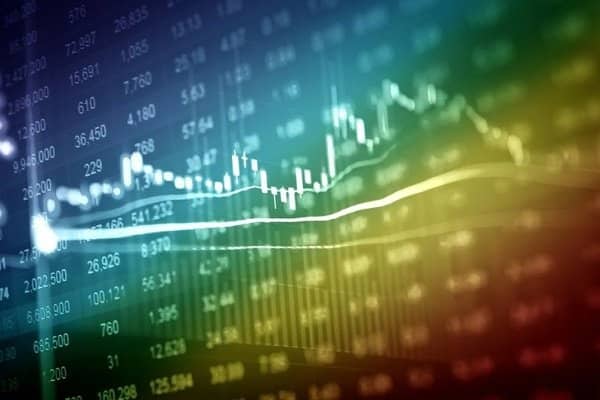Before you start trading futures, you need to familiarize yourself with all the nuances of this lesson. Including – to study the commissions that will have to be paid when trading on the exchange itself and the HKO NCC (National Clearing Center).
- What are futures?
- Commissions on futures on the Moscow Exchange
- For granting permission to trade
- To the Guarantee Fund
- For the conclusion of futures contracts
- For the conclusion of contracts on the basis of margin
- For scalping trades
- clearing
- For transactions
- For Calendar Spreads
- What is the expiration date for futures?
- The danger of the derivatives market
What are futures?
Commissions on futures on the Moscow Exchange
All commissions upon purchase are paid by the trader, with the exception of the contribution to the Guarantee Fund – all parties contribute funds to it.
For granting permission to trade
There are several types of contributions, depending on the category of the Participant:
- “O” – 5 million rubles (access to all selections: stock, money and commodity);
- “F1” or “F2” – 3 million rubles (access to stock selection);
- “T1” or “T2” – 1 million rubles (access to commodity selection);
- “D1” or “D2” – 1 million rubles (access to monetary selection).
To the Guarantee Fund
This derivatives market fund is formed by the Clearing Center at the expense of contributions from all Participants admitted to clearing. Guarantee funds are intended to cover the risks arising from the possible failure of the participants to fulfill their obligations.
The smallest contribution to this fund of the Clearing Members is 10 million rubles.
For the conclusion of futures contracts
The amount of fees in this case is calculated as follows: FutFee = Round (Round (abs(FutPrice) * Round(W(f)/R(f);5) ;2) * BaseFutFee;2), where:
- FutFee — futures trading fee (in rubles), always ≥ 0.01 rubles;
- FutPrice — futures price;
- W(f) — the cost of the minimum price step of the concluded futures;
- R(f) is the minimum price step of the concluded futures;
- Round – a function that rounds a number with a given precision;
- abs – module calculation function (unsigned number).
- BaseFutFee — the amount of the base rate for the Groups of contracts that exist as follows: currency — 0.000885%; interest – 0.003163%; stock — 0.003795%; index – 0.001265%; commodity – 0.002530%.
For the conclusion of contracts on the basis of margin
Futures margined fees are calculated as follows: OptFee = Round (min [(FutFee * K); Round(Premium * Round(W(o)/R(o);5) ;2) * BaseFutFee] ;2), where:
- OptFee — exchange commission (in rubles), always ≥ 0.01 rubles;
- FutFee and Round – similar to the values \u200b\u200bof the previous paragraph;
- W(o) — the size of the minimum price step of the futures (in rubles);
- R(o) — the minimum price step of the futures;
- K is a coefficient equal to 2;
- Premium — the size of the option premium (in units of measurement specified in the order for the futures price);
- BaseOptFee – the value of the base rate of the exchange is 0.06325 (exchange), the base clearing rate is 0.04675.

For scalping trades
Commission for scalping trades on futures is calculated using the following formulas:
- Fee = (OptFee(1) + OptFee(2)) * K → if OptFee(1) = OptFee(2);
- Fee = 2 * OptFee(1) * K + (OptFee(2) – OptFee(1)) → if OptFee(1)< OptFee(2);
- Fee = 2 * OptFee(2) * K + (OptFee(1) – OptFee(2)) → if OptFee(1) > OptFee(2).
Where:
- OptFee(1) — the total amount of fees for transactions that lead to the opening of futures;
- OptFee(2) — total amount resulting in futures closing;
- K is a coefficient, always equal to 0.5.
clearing
It is determined in Russian rubles individually for each exchange transaction of the derivatives market. Everything about clearing commissions can be found
in the document provided by the Moscow Exchange.
For transactions
Fees are divided into 3 types, for transactions:
- Inefficient. They are used if many transactions are carried out, but few transactions are made. Calculation formula: TranFee = 0.1 max (K – (f * l) ;0), where:
- k – score for the transaction (taken from the table below);
- f – the fee paid for the fact of the transaction;
- l — score for the deal (taken from the table below).
- Erroneous Flood Control. They are used if there are many such transactions with error code 9999. Commission less than 1 thousand rubles per trading session is not charged. The maximum fee for one session is 45 thousand rubles. The basic formula for calculating: Sbor (l) = min (max (x, x2 / 50), 250) * 3.
- Mistakenly executed but different from Flood Control. It is used if there are many such transactions with error codes 31, 332, 333, 4103, 3, 14, 50 and 0. Calculation formula: TranFee2 = min (Cap(max);max (2 * Σх(i);Σх( i)2)). The fee is taken if TranFee2 > Cap(min). Explanation of values:
- TranFee2 — amount of commission for erroneous transactions (in rubles including VAT);
- Cap(max), equal to 30,000 — maximum commission limit for erroneous transactions (in rubles);
- Cap(min) equal to 1,000 — limitation of the minimum commission for erroneous transactions (in rubles);
- х(i) is a value that is always calculated individually from the sum of all points for the i-th second and the login limit.
Scoring table for transactions and futures transactions:
| Market maker/non-market maker (yes/no) | Point per transaction | Point per deal |
| No (high/low liquidity) | one | 40 |
| Yes (highly liquid) | 0.5 | 100 |
| Yes (low liquidity) | 0 | 0 |
Information on the amount of the fee can be found in the clearing reports
All formulas are given for the purpose of familiarization and a deeper understanding of the nature of commissions and fees, it is better not to calculate anything yourself.
For Calendar Spreads
The fee for trades based on non-address orders is calculated by the formula: Fee(CS) = FutFee(CS) * (1 – K), where:
- FutFee(CS) — commission for futures operations, charged in rubles on the basis of unaddressed orders;
- Fee(CS) — amount of the fee charged in rubles on the basis of unaddressed orders per one trading day;
- K is the betting coefficient, which is equal to 0.2.
The fee for trades based on targeted orders is calculated by the formula: Fee(CS) = ΣFutFee(CS), where the definitions of the values are similar to the previous ones.

What is the expiration date for futures?
If you want to hold a position for a long time, after the final liquidation of the June futures (or after closing the position shortly before the expiration date), you will need to buy the next, already September, futures (this operation is called rolling). When you re-purchase (after the expiration date), you will need to pay the commission again to the exchange and broker.
The reason for holding a position, for example, may be confidence in the growth of the US dollar.
The danger of the derivatives market
For novice traders and investors, this market is full of ominous dangers. In this market, a lot can happen quickly and unexpectedly. The daily drop in the portfolio can amount to tens of percent. In addition to liquidating your portfolio, you can also get indebted from a broker. In a critical situation, the fall of one or another instrument can reach 20-60% within a few hours. This is similar to trading with leverage of 1×20 or higher.
It is necessary to understand the potential risks and not to direct all available funds to the derivatives market.
All commissions and fees that must be paid to the Moscow Exchange and HKO NCC (National Clearing Center) have their own rules and calculation formulas. Some terms are constant, while others are individual.




